The Jeholopterus |
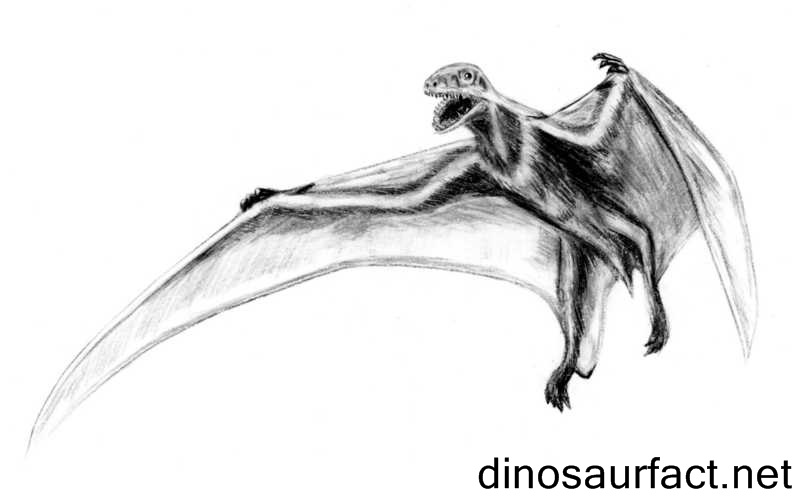
Jeholopterus was different from the garden-variety of pterosaur. It differentiated from other pterosaurs by its unusually sharp and large claws. It might have got a widely articulated jaw, which it could open wider as compared to any other pterosaur. It would have got a cat-like head and a short tail. Some paleontologists believe that, Jeholopterus would have adhered to the backs of large dinosaurs and would have sucked their blood to feed themselves. But, this habit of Jeholopterus was not proved. This creature got its name from Xu Xing, Zhou Zhonghe and Wang Xiaolin in the year 2002. The scientific name of the genus is Jeholopterus ninchengensis. The term Jehol is derived from the place of China from where the fossils were found and the term pterus was derived from Greek word the meaning of, which is wings. The term ninchengensis was derived from the Nincheng County . The fossils were flattened into a counter slab and slab pair, in such a way that one part of the fossil is preserved in one part of the split stone and other parts in some other stone. The preserved parts include carbonized skin fibers, protofeathers and hair as well. The fibers are conserved around the body of the sample in a circle of light. The wing tissues are also conserved, even though the level is arguable, inclusive of the point of attachment to the legs. The arguable fact is that whether the lags are attached or not. In the year 2009, a report was published by Alexander Kellner, which shows the existence of three layers of fibers in the wing. The neck of Jeholopterus would have got seven to eight cervical vertebrae. They would have got twelve to thirteen dorsal vertebrae and three sacrals as well. They would have got five pairs of belly ribs. They are classified under reptilia class and pterosauria order. They are further classified under the suborder of Rhamphorhynchoidea under the family anurognathidae. Generally, short tail is unusual in case of rhamphorhynchoid, but they are common in anurognathids and so they are classified under the family of anurognathidae. The wing bones of Jeholopterus were healthy and they had short metacarpals. Jeholopterus would have got a curved and long hand claws. Their wing bones show that they would have attached to the ankle. They also had strong legs and the toes of the legs would have got curved claws. But, the claws in the legs are shorter than that of claws in the hands. |
lunes, 18 de enero de 2010
The Nemicolopterus |
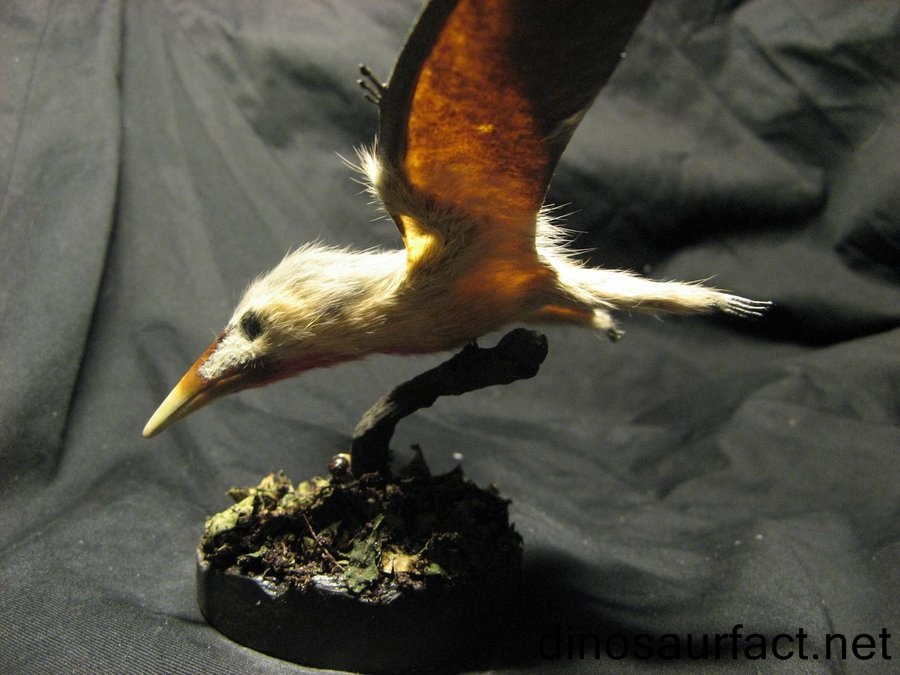
Nemicolopterus belong to the Pterodactyloid Pterosaur genus. Until 2008 we were not associated with the name. It is assumed that the species frequented in Jehol Biota about 120 million years back. It was not a giant bird; just a small one having a wingspan of 10 inches. It was even smaller than the species of the hatching pterosaurs. The specimen that was found by Wang in the year 2008 was nothing but the fragments of ossification of toes and sternum. From these fragments it was assumed that the species was nothing but a hatchling. According to Darren Nash, the Pterosaurs were highly precocial. As a result, the fusion of bones and ossification occurred at every early stage. Thus the conclusion goes thus that the Nemicolopterus might be a hatchling of the Sinopterus genus. It is assumed that the name Nemicolopteus has been derived from the Greek word forest dwellers that have wings. In Greek 'Nemos' means 'forest', 'ikolos' means 'the dweller' and the 'pteros' means nothing but 'wings'. And finally 'crypticus' means 'hidden'. Thus if we may analyze the total segments we find the group of words ' The flying forest dweller that is hidden'. We came to know of the N.Crypticus from a fossil. Beijing Vertebrate Paleontology and Paleoantropology kept it in their custody. The fossil of Jiufotang Formation belonged to the Aptian age. The fossil was discovered in the Yaolugou Town of the Jianchang County of the Liaoning province of China . We came to know that Nemicolopterus was a Pterosaur that had no tooth. According to Wang, the bird was a intermediate between the Pterosaurs that had tooth of the genus Ornithocheiroidaea and the toothless genus of he Dsungaripteroidea. Nemicolopterus was a very small bird. But according to scientists, the small birds evolved into the flying big birds like Quetzalcoatlus. Nemicolopterus used to clutch the tree branches with the tiny claws. They roamed freely from one branch to one branch. But contradictions loom large when most of the pterosaurs are retrieved from the sea bed. It highlights that the little birds not only roamed on the tree tops they were accustomed to catch fish in the sea beach. They used to sit on the rocks or cliffs near the sea water so that the fish could be grabbed quite easily. But when the question of the Nemicolopterus comes to the forefront, it is revealed that it was such a small bird that lived on insects. They used to spend time roosting on the trees in leisure time. |
lunes, 11 de enero de 2010
The Globidens |
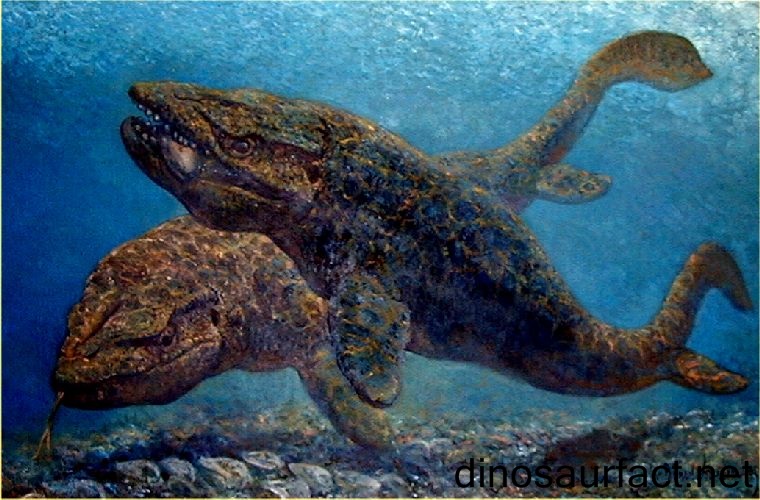 Globidens are marine reptiles that belong to the Triassic era. They were survivors of the earth about 215 million years ago. The globidens were a part and sect of the mosasaur lizards. They were the largest living lizards. The fossils of the Globidens indicate that they were about 20 feet (i.e.) 6m in length and they had sharp teeth . But, researchers could not find out the weight of the dinosaur. Fish were a major part of the diet of Globidens. These lizards had flippers along with a long tail and neck. Their heads were pointed. The fossils of the Globidens indicated that it had spent most of its time under water, but it crawled onto the land with the help of its strong legs. The Globidens had more or less the same appearance as mosasaur lizards since it had the same type of flippers, powerful jaws and laterally flattened tail. In the year 1912, Gilmore is the first person to describe about the Globidens. The second species was described in the year 1975 by Russel and the third species in the year 2007 by Martin. The Globidens had flattened limbs which functioned as hydrofoils. The hind limbs of the species of dinosaurs were less significant and they helped in surface control and in stabilizing like sea turtles. It has moreover been seen from the bones of its limbs that these dinosaurs crawled through the water beds just like the small freshwater turtles. The pectoral girdles of the Globidens were mightily built and the girdles made it possible to attach the strong muscles. And the researches showed that the pectoral girdles were located under the shoulders. Hence, they were used by the dinosaur species for swimming. Apart from the speciality of the limbs of the Globidens, the tail bears a resemblance to aquatic reptiles. The powerful tail muscles enabled the amazing species of dinosaurs to heave it from side to side along with a control to use it as a weapon as well. Globidens are regarded to be ovoviviparous, which means that they reproduced by eggs which developed inside the body. The fossils of Globidens displayed a deficiency in ossification and a basic elbow joint in the progression of olecranon of the ulna. Such a feature has enabled these dinosaurs to crawl over to the beaches during the egg laying process. The specimen was found in similar type of deposit and at altered developmental stages in and around the same locality. Hence, it is believed to sustain an ovoviviparous model. But, the fossils of the female Species of the Globidens indicated that it had foetuses inside the lower segment of the thoracic cavity. So there were a lot of details found about these dinosaur species from its fossils. But, some of the conclusions are still unsolved. The Globidens evolved during the dinosaur era and ruled as the water lords. They were strong and had all the weaponry and armour in their body. If you wish to gather more details about this amazing species of dinosaurs. |
The Hatzegopteryx |
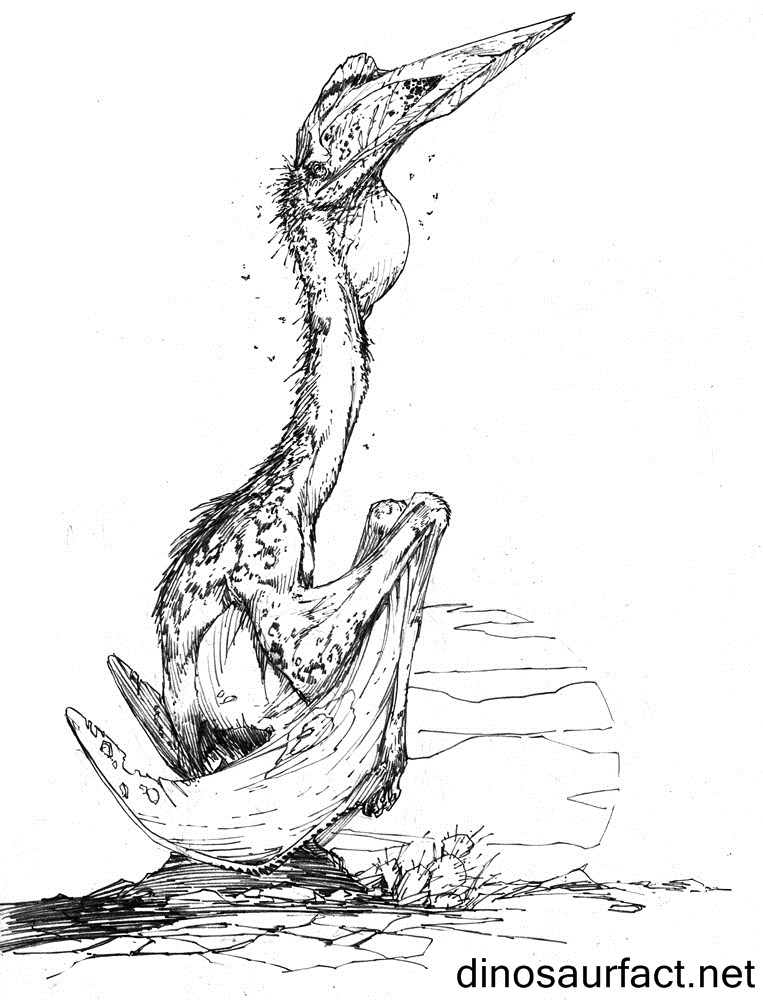
This species received this name in the year 2002 from Romanian Paleontologists Zoltan Csiki and Dan Grigorescu and French Paleontologist Eric Buffetaut. Its biological name is Hatzegopteryx Thambema. The term Hatzeg was used to denote the basin of Transylvania called Hateg Island and the fossils of this species were found from here only. The term pteryx is a Greek word pteryx and the meaning of the term is wing. The term thambema was also derived from a Greek word and the meaning of the term is monster. The name itself refers that it was a huge sized species. Hatzegopteryx was known to have lived around 65 million years ago, during the late Cretaceous period. The fossils contained the damaged proximal part of a left humerus and the back part of the skull. From the same area, researchers also found a femur of about 38.5cm long and they assumed that it would also have been belonged to Hatzegopteryx. Generally, the skull of pterosaur would have been made up of lightweight struts and plates, but the skull of Hatzegopteryx was heavy with its robust construction. With the heavy weight of the skull, researchers assumed that it would not have been able to fly. But, the wing bones of this creature have some similarities with that of flying pterosaurs. So, they decided that for the purpose of flying, the weight of the skull of this pterosaur might have been reduced by following some unconventional methods. They also suggested that they would have been able to reduce their weight with the help of internal structure of the bones in the skull, which were full of small hollows and pits up to 10mm long. This was partitioned by a matrix of thin bony struts and they were able to find this feature in some part of the wing bones of Hatzegopteryx as well. They concluded that this would have allowed a stress-resistant construction and this would have remained lightweight, enabling them to fly. The researchers anticipated the size of Hatzegopteryx by associating the humerus fragment of Hatzegopteryx with that of the humerus fragment of Quetzalcoatlus. The humerus of Hatzegopteryx was 263mm long, while that of Quetzalcoatlus was 544 mm long. With this comparison they estimated that Hatzegopteryx would have been slightly longer that Quetzalcoatlus. They also noted that the wingspan of Hatzegopteryx was about 12 meters, while in the case of Quetzalcoatlus, it was about 20 meters. Finally, they came to a conclusion that the skull length of Hatzegopteryx would have been 2.5 meters, while its wingspan would have been twelve meters. Hatzegopteryx was classified under the kingdom of Animalia with chordata phylum. It is further classified under the class sauropsida with order pterosauria and suborder pterodactyloidea and it was known to have belonged to the family of Azhdarchidae. |
sábado, 9 de enero de 2010
The Henodus chelyops |
 Henodus chelyops are also known as” Turtle-Faced Single Tooth". Henodus chelyops was a type of placodont, which during the Carnian stage of Late Triassic period. The relics of Henodus chelyops were found in Germany and Tübingen. The length of the fissile was around 3.3 ft that means 1 meter. The original name of this dinosaur is just henodus and henodus chelyops is its biological name. This has received the name from Von Huene in the year 1936. Henodus Chelyops is classified under the kingdom of animalia, under the phylum chordate and class sauropsida. It is classified under the superorder sauropterygia, under the order placodontia. Henodus chelyops was nothing, but the placodont that had the maximum similarity to the modern turtle. It also had a shell produced from a plastron on the underneath and a covering on the top portion. The exterior portion is well extended further than the limbs, and was prepared by different plates of bony scutes and plated by covers of horn. On the other hand, the shell was created by several pieces of bone and the number of bones was higher when you compare this to the turtles, forming a medley prototype. The protective covering was combined to its back, and its limbs were positioned in the usual positions, different from the turtle, where they are positioned within the ribcage. The feeble limbs of Henodus chelyops propose it tired little, if any time on ground. Henodus chelyops are considered to be ovoviviparous, which signifies that they reproduced by their eggs which developed inside the body. Such a feature has enabled these Henodus chelyops to crawl over to the beaches during the egg laying method. The specimen was found in similar type of deposit and at altered developmental stages in and around the same locality. Hence, it is believed to sustain an ovoviviparous model. But, the fossils of the female Species of the Henodus chelyops indicated that it had foetuses inside the lower segment of the thoracic cavity. The Henodus chelyops are also had a particular tooth on each side of the mouth, while the rest of the teeth were restored by a mouth. These teeth were plane/flat to squash bottom house shellfish. The head is square in shape and the eyes are situated ahead of the head. The Henodus chelyops are the lone placodont thus far appeared in non-marine places, telling it may have existed in salty or freshwater ponds. So there were a lot of details found about these Henodus chelyops from its fossils. But, some of the conclusions are still unsolved. The Henodus chelyops evolved during the dinosaur era and ruled as the water kings. They were strong and had enough covering for their protection on their body. If you wish to gather more details about this amazing species of Henodus chelyops , then take the help of internet. So, through the help of internet, you will be able to get millions of result showing the best information on Henodus chelyops and you can get the images of these wonderful species are well. |
domingo, 3 de enero de 2010
The Megalosaurus |
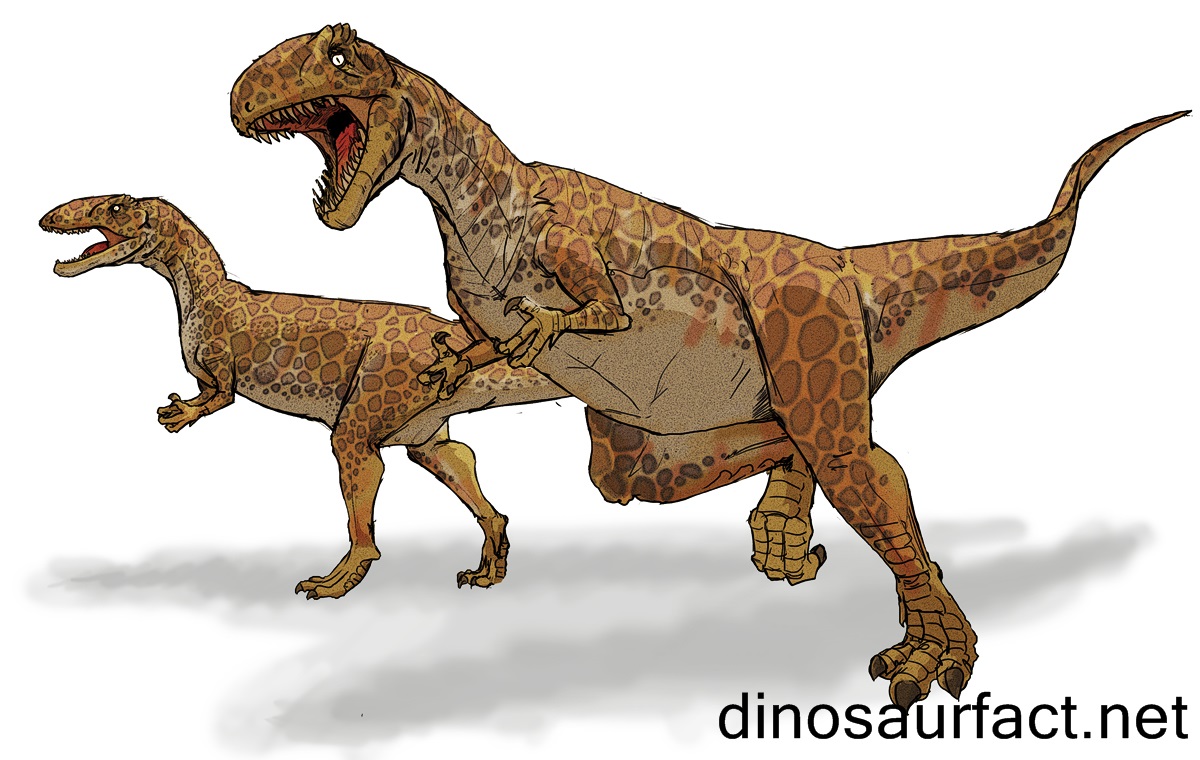 Megalosaurus – the ferocious meat eater Megalosaurus was one of the first dinosaurs to be found and named. It should be pronounced as Meg-ah-low-sore-uss. The meaning of the word Megalosaurus is ‘great reptile'. It was a large meat-eating dinosaur and was known to have been lived around 175 million years ago during the Jurassic period. It was discovered in England in the year 1676. It was named by William Buckland in the year 1824. Later in the year 1827 Gideon Mantell assigned the species name Megalosaurus bucklandii to honor Mr. William Buckland. Megalosaurus was known to have been around 30 feet (i.e.) nine meters long and it 10 feet tall (i.e.) three meters. This dinosaur was known to have been weighed around one ton. The dinosaur had a bulky body with heavy bones and long legs with clawed feet. The arms of the dinosaur were short as compared to the legs and the hand three fingers with sharp claws. It also had small bony knobs over each eye and large powerful jaws with sharp and long teeth, which enables it to eat meat. It was a fierce hunter and killer that could kill even large sauropods, which is another kind of dinosaur. It was known to be more intelligent as compared to the other dinosaurs. The intelligence was measured by its relative brain to the body weight, which is also called as Emotional Intelligence. Megalosaurus was relatively fast runner as compared to other dinosaurs. The speed of the dinosaur was judged by scientists on the basis of their morphology (i.e.) the characteristics like estimated body and leg length. The speed was also judged on the basis of the fossilized track ways of the dinosaur. Megalosaurus was a lizard-hipped dinosaur also known as saurischian. Initially, in the year 1676, a part of the skeleton of Megalosaurus was found at a limestone quarry at the city of Cornwell near oxford, situated at England. The bone was then sent to Robert Plot, who was the professor of chemistry at the Oxford University and he was also the first curator of the Ashmoean Museum. Pr. Robert plot identified it to be the thigh bone of a large animal, which was then found to be the bone of Megalosaurus. Then, more discoveries began in the year 1815 to know more about this dinosaur, which resulted in the discovery of a bone at the stones field quarry situated at the north of Oxford, which was acquired by William Buckland, who was the dean of Christ church and the professor of Geology at the Oxford University. Pr. William Buckland found some bones like fragments of pelvis, some vertebrae, hind limbs and a piece of lower jaw with teeth, which belonged to different Megalosaurus, with the help of which he found that all the bones belong to a giant animal which belonged to the lizard family and then he named it as Megalosaurus. Among the different dinosaurs, Megalosaurus was regarded as the dangerous and ferocious dinosaur since it was a meat eater. Hope, you would have understood about Megalosaurus. |
sábado, 2 de enero de 2010
The Kronosaurus |
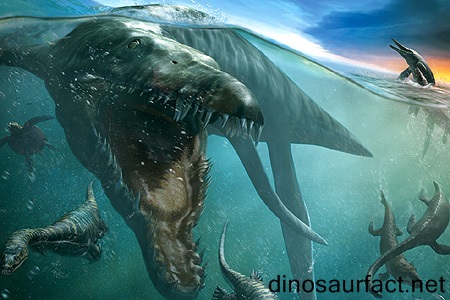 Kronosaurus was the largest marine reptile that ever lived. It belonged to the category of plesiosaur, which is a meat-eating reptile. As considered by most of us, Kronosaurus is not a dinosaur, it is a plesiosaur. It was known to have been lived in the early cretaceous period and it belonged to the Dolichorhynchopidae family. It is known to have been lived around 110 million years ago. The term Kronosaurus was derived from the Greek word and the meaning of the term is krono's lizard. Kronos was known to be the Greek god of time, who is known to have eaten his own children for the purpose of guarding his powers. The term Kronosaurus is pronounced as crow-no-sore-us. Kronosaurus is known to have been lived in the country of Australia and it was a highly skilled swimmer. Apart from Australia , these plesiosaurs would have been lived in South America and Columbia as well. The fossils of Kronosaurus were found in Queensland , Australia in the year 1889 and it was found by A. Crombie. It was named in the year 1924 by Longman. Kronosaurus were known to be the ferocious predators of the sea and it would have been lived in the open oceans, but would have also required swimming to the surface since it was an air breathing reptile. They might have been able to move a little in the land like seals. From the fossils of Kronosaurus, it was found that it would have got a pointed tail, short neck with four long flippers and a huge head. It has a rounded teeth and strong jaws and tooth of the Kronosaurus was so strong that it would easily crush the shells. The four paddle-like flippers had enabled the Kronosaurus to move around water like sea turtles. The diet of these plesiosaurs was large squids, ichthyosaurs and sharks. It was known to have been around 30 feet (i.e.) 9m long. The head of Kronosaurus alone was around 9 feet (i.e.) 1/3 rd of the total body length. It has been found that it would have been weighed around seven tons. Even though, the Kronosaurus were known to have been lived in oceans, it would have swim to the surface for laying eggs as is being done by turtles nowadays. Like turtles, Kronosaurus has also laid eggs in nests dug in the sand. According to a research Kronosaurus made its living just like the present day shark in such a way that it had eaten every all animals living in the water coming in its way. It has been found that it did not restrict itself in eating just squids and fish, but feasted occasionally with other aquatic reptiles as well. From the fossils of Kronosaurus, researchers have found some stones in their stomach and they assumed that these stones might have been consumed by the Kronosaurus for grinding up their food or the stone might have also been used as ballast for the purpose of diving. Hope, you might have got the required information regarding Kronosaurus. |